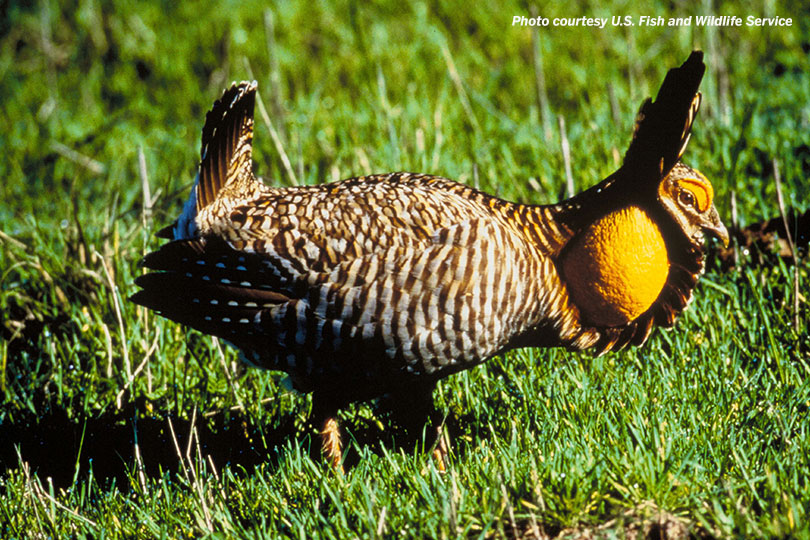By Jennifer Whitlock
Field Editor
In Goliad County, the Dunn O’Connor River Ranch has been in the family for almost 200 years. The current generation of owners, Morgan O’Connor, Kelly Schaar and Bridey Greeson, are dedicated to preserving their family’s ranch and rural lifestyle while also preserving the Attwater’s prairie-chicken.
Through their work with the U.S. Fish and Wildlife Service (USFWS) and other federal and state agencies, O’Connor said they maintain a successful rotational grazing program for their cattle that also benefits the native wildlife.
“The really great thing is if you target making the land productive for the cattle, it also benefits the wildlife and vice versa,” she said. “I think the most important thing we do is rotational grazing, because by doing that, you don’t overgraze and deplete the good forage.”
The family began practicing rotational grazing in the mid-1980s, thanks to some cost-sharing from federal and local partners. O’Connor noted they also practice prescribed burning and chemical control of invasive plant species to maintain and rejuvenate the landscape.
Huisache is particularly problematic in the Coastal Bend. They have done everything from aerial applications to individual plant treatments to control the thorny, fast-growing brush, which offers poor grazing for wildlife and livestock.
Along with preserving habitat for the deer, dove, quail, turkeys, foxes, alligators and other native wildlife found on the ranch, O’Connor is proud of the work her family has done to reintroduce the endangered Attwater’s prairie-chicken.
The birds were once found on 6 million acres of prairie along the Gulf Coast in Texas and Louisiana. In 1836, there were an estimated 1 million Attwater’s prairie-chickens roaming the coastal prairies.
But as urban development gobbled up much of the open coastal prairies, the bird’s population declined sharply. By 1919, they were no longer found in Louisiana, and in 1973, the Attwater’s prairie-chicken was added to the USFWS Endangered Species List.
Now, the Dunn O’Connor River Ranch is one of just three locations where Attwater’s prairie-chickens may be found in the wild—and the only privately-owned habitat.
The other two locations, the Attwater Prairie Chicken National Wildlife Refuge in Colorado County and Texas City Prairie Preserve in Galveston County, are owned and operated by federal and non-profit entities.
“My mother actually signed up with USFWS and the Nature Conservancy to do this project to reintroduce the Attwater’s prairie-chickens into the wild. That was in 2007, and we’ve been doing this for 14 years now,” O’Connor said in an interview with the Texas Farm Bureau Radio Network. “The project mixed our strong feelings about the prairieland, which we love, and being able to save an endangered species.”
The birds are bred and hatched at the Houston Zoo or Fossil Rim Wildlife Center in Glen Rose, according to O’Connor. When the chicks are six to eight weeks of age, USFWS and Nature Conservancy staff bring them to the ranch and acclimate the birds before releasing them two weeks later.
The family is thrilled with the results of the reintroduction program.
USFWS recently celebrated an estimated population of at least 178 birds, a population level not seen in almost 30 years.
“We’ve had chickens found 10 miles away, which is fabulous because that’s exactly what we want, for them to spread,” O’Connor said. “When we started this, I think they had identified something like five or six of these birds still in the wild.”
It’s been gratifying to see not only the changes in the wildlife populations over the years, but the changes to the land itself, she said.
“From the time I was a kid, the land was always looked at as a sacred trust that we need to maintain and hopefully turn it over to the next generation in as good as or better shape than when we got it,” O’Connor said. “This land has been in my family for almost 200 years, and I feel like we’re stewards of the land. We need to take care of it, maintain it and make it a great habitat for the cattle and wildlife.”

